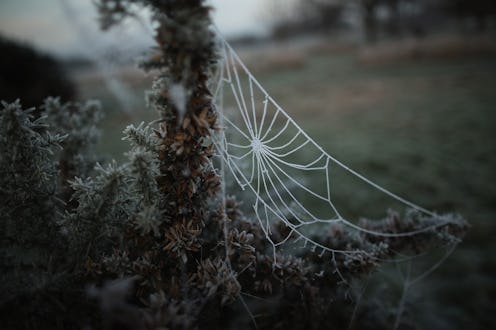News
City Spiders Are Getting Huge and Multiplying
City life may not agree with everyone — the smells, the heat, the density of people — but certain creatures of the eight-legged variety seem to love it. According to a new study in scientific journal Plos One, spiders in cities are getting bigger, faster and better at multiplying. I hate to break it to you, but no, it's not just in your head: they really are massive in New York.
The alarmingly apocalyptic-sounding study looked at Nephila plumipes, a "golden orb-weaving" spider whose gentle name belies the fact that it can be majorly aggressive: not only will the females sometimes eat males after copulation, if you're unlucky enough to be bitten by one, it can cause pain and even numbness. The species is common in Australia, where its gigantic, terrifying nets have been known stretch across the sky. In short, arachnophobes? Nephila plumipes is not the spider for you.
Unfortunately, it is this same spider species that is growing larger and more fertile, thanks to our warm, food-filled cities. The researchers looked at 222 female spiders in and around Sydney, measuring the little critters' ovary weight (which is linked to fertility), body size and fat reserves. What they found was that the urban environments saw golden orb-weavers that were larger and more likely to multiply than their country-side counterparts.
As a point of comparison, take the average mass of spiders inside and outside of an urban environment. According to figures Elizabeth Lowe, a researcher with the University of Sydney, told the New Scientist, it goes like this: Spiders in Brisbane Water National Park? An average of 0.5 grams. Spiders in a park in the center of Sydney? A whopping 1.6 grams. That's one and half times the size.
Wondering why (and how we can stop these super-spiders from eventually taking over Manhattan)? The researchers surmise that it's probably a combination of temperature — cities are hotter, and spiders love the heat — and prey availability (insects tend to cluster around city lights).
If all this has made you want to hide yourself away a white-picket-fence-type abode, then be warned of this creepy fact: When it came to suburbs, the study found that it wasn't just a higher population density that led to larger spiders, it was also the wealth bracket of the households. In other words, Nephila plumipes were getting bigger and breeding more in wealthier suburban homes. One explanation for this is that more affluent families will spend more on gardens around the house, which could attract more prey, and lead to greater spider growth.
Worrying as this all is, perhaps we should be glad that at least it's not the terrifying semi-aquatic fish-eating spiders that are doubling in size. That we know.
Images: Getty (1)
